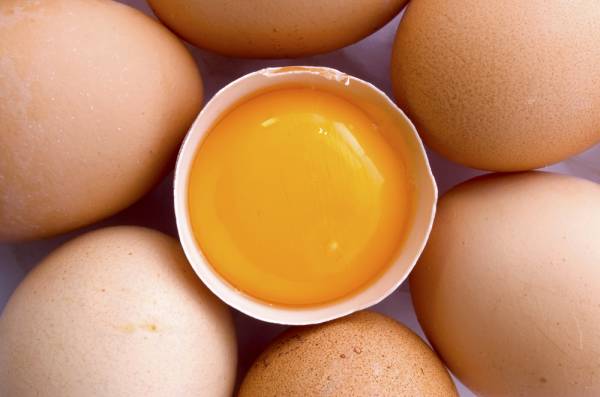This week, in part seven of my series on the ins and outs of vitamins, we will look at the cosmetically added ingredient in many hair and nail products known as vitamin B7 or biotin.
What Does Vitamin B7 (Biotin) Do?
Vitamin B7, also known as vitamin H or more commonly called biotin, is the sixth of the eight B vitamins and one of the lesser known. In the 1930s and 40s, biotin was discovered during research when chicks being fed diets high in raw egg whites continually developed rashes on their skin and would even lose the feathers from around their eyes. These symptoms all subsided when egg yolks were added into their diet. In determining the cause, researchers identified a substance in the raw egg whites called avidin that is a glycoprotein that binds with biotin preventing it’s absorption.
Biotin is used in the body to metabolize both sugar and fat. In metabolizing sugar, biotin transports sugar from its beginning stages to its eventual conversion into usable energy. An enzyme called acetyl Co-A carboxylase requires biotin to function properly. This enzyme forms the building blocks of fat production in the body, and is critical as all cell membranes in the body need to contain the correct fat components in order to function effectively.
Skin cells rely heavily on fat production, as well. Due to the role that biotin has in fat synthesis, this is why a deficiency of biotin often involves skin-related symptoms. Biotin also functions as a supportive vitamin in the nervous system as both glucose and fats are utilized for energy within the nervous system.
Foods Rich in Vitamin B7
The best sources of vitamin B7 are bean sprouts, butter, Bulgar wheat, cashews, egg yolk, kidney, liver, milk, oats, peanuts, and yeast
Vitamin B7 Synergistic Nutrients
Nutrients that can help with vitamin B7 are chromium, vitamin, B2, B3, B5, B6, B12, folate, magnesium, and manganese.

Vitamin B7 Deficiency
It’s rare to be deficient in biotin, but deficiency usually shows up in skin related problems. These include seborrheic dermatitis in adults and cradle cap in children. Hair loss can also be a symptom of biotin deficiency.
The nervous system can also be affected by a biotin deficiency. Symptoms can include seizures, lack of good muscle tone, and lack of coordination. Muscle cramps related to physical exertion can also be a symptom, as the body will have an impaired system to effectively use sugar as fuel.
Vitamin B7 Side Effects
Biotin has been used for extended periods of time in doses as high as sixty milligrams per day for years, and as no negative reports have been revealed in any type of research literature, it has been established that no tolerable upper limit be set for biotin intake.
Vitamin B7 Researched Uses
Vitamin B7 is currently being investigated to help with the following conditions:
- Hair loss
- Pregnancy
- Intestinal imbalances like inflammatory bowel syndrome and irritable bowel
- Neuromuscular conditions, including seizures, ataxias, and hypotonias
- Skin conditions
Vitamin B7 Recommended Intake
It is recommended to get the following amounts of vitamin B7 per day:
- Infants: 5mcg up to 6 months and 6mcgup to 12 months
- Children: 8mcg a day up to 3 years, 12mcg a day up to 8 years, and 20mcg a day up to 13 years
- Adolescents and adults: 25mcg a day for males 14 -18 years and 30mcg a day from 19 years and older. 25mcg a day for females 14 -18 years and 30mcg a day from 19 years and older
- Women who are pregnant or breastfeeding: Pregnant women will need 30mcg and breastfeeding women will need around 35mcg a day.
With any type of supplementation always consult your health care provider to make sure you are taking the correct doses or to check if you even need to supplement as your diet could be providing an adequate supply. In this case, if you like your eggs it’s just another great excuse to get some more in your diet.
Continue by reading the other articles in the series ABCs of Vitamins:
- The ABCs of Vitamins: Vitamin A
- The ABCs of Vitamins: Vitamin B1 (Thiamine)
- The ABCs of Vitamins: Vitamin B2 (Riboflavin)
- The ABCs of Vitamins: Vitamin B3 (Niacin)
- The ABCs of Vitamins: Vitamin B5 (Pantothenic Acid)
- The ABCs of Vitamins: Vitamin B6 (Pyridoxine)
- The ABCs of Vitamins: Vitamin B9 (Folate or Folic Acid)
References:
1. Osiecki, Henry , The Nutrient Bible 8th Edition, Bio Concepts Pub, Kelvin Grove QLD
2. “Biotin.” The World’s Healthiest Foods.
3. “Biotin” Medline Plus. November 2011.
4. “Vitamin H (Biotin)” University of Maryland Medical Center. June 2011.
5. Fiume (2001). “Final report on the safety assessment of biotin.” International Journal of Toxicology 2: 45–61.
6. Zempleni J, Mock DM. (1999). “Biotin biochemistry and human requirements.” J Nutr Biochem. 10 (3): 128–138
Photos courtesy of Shutterstock.






